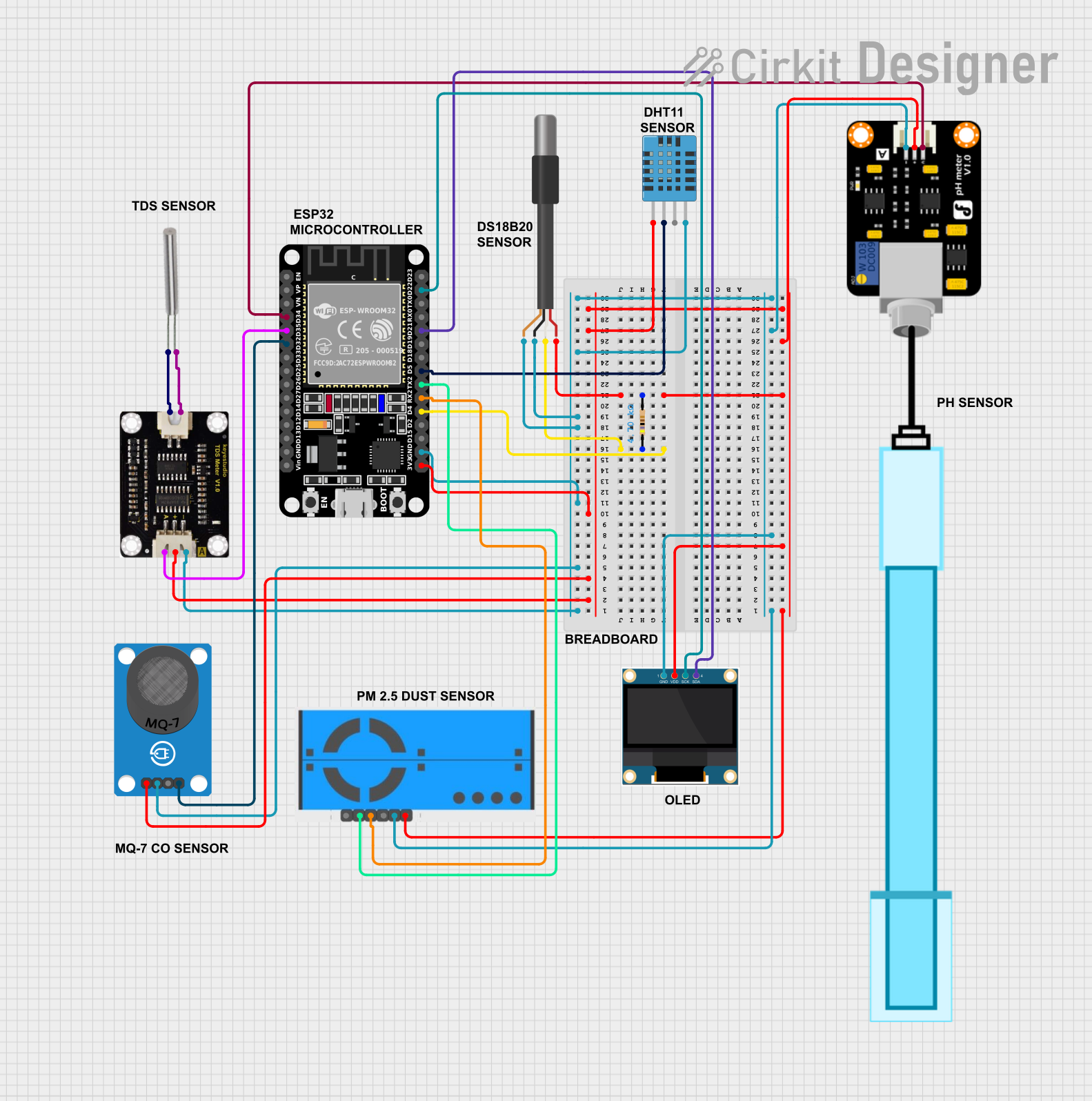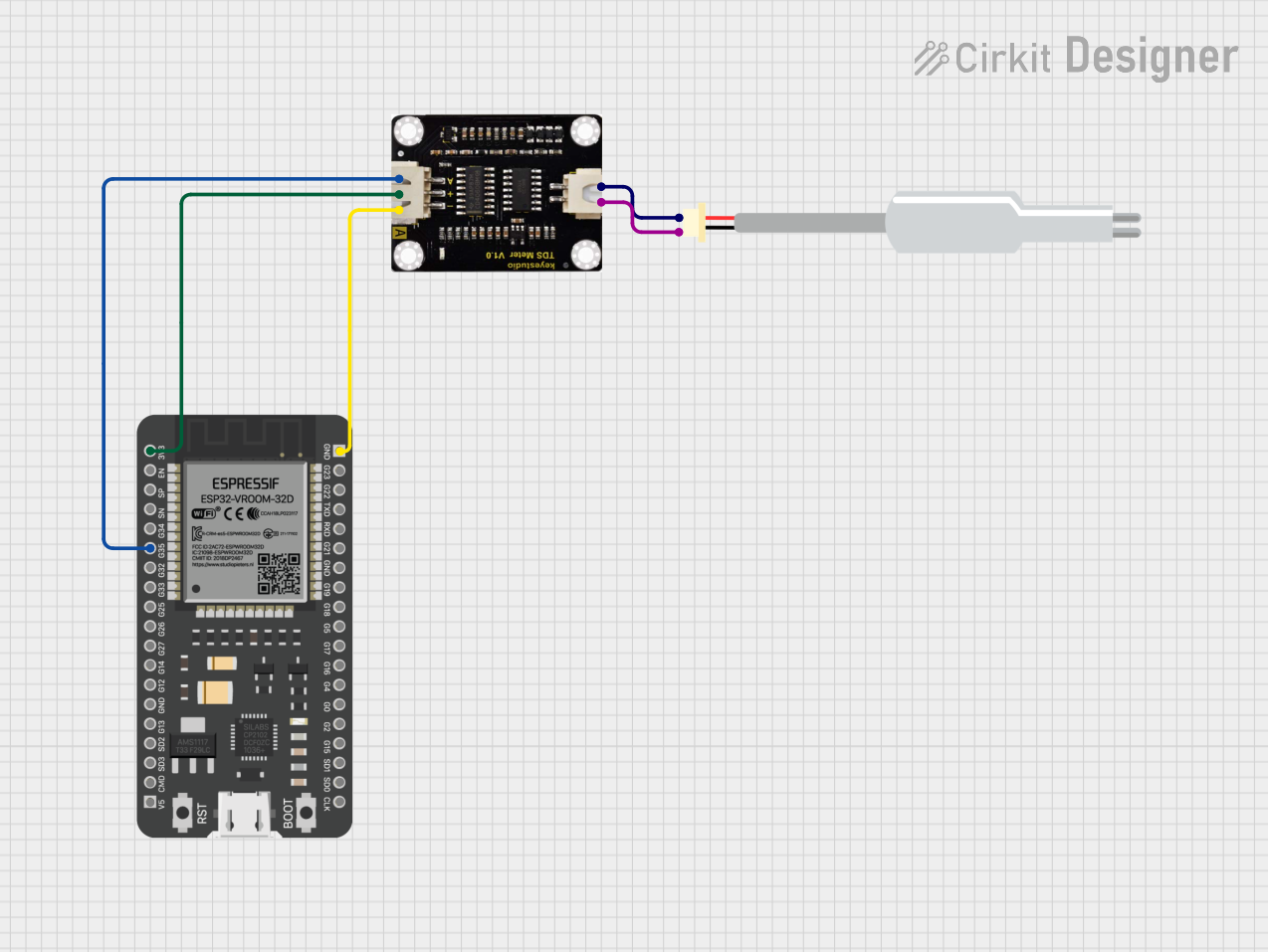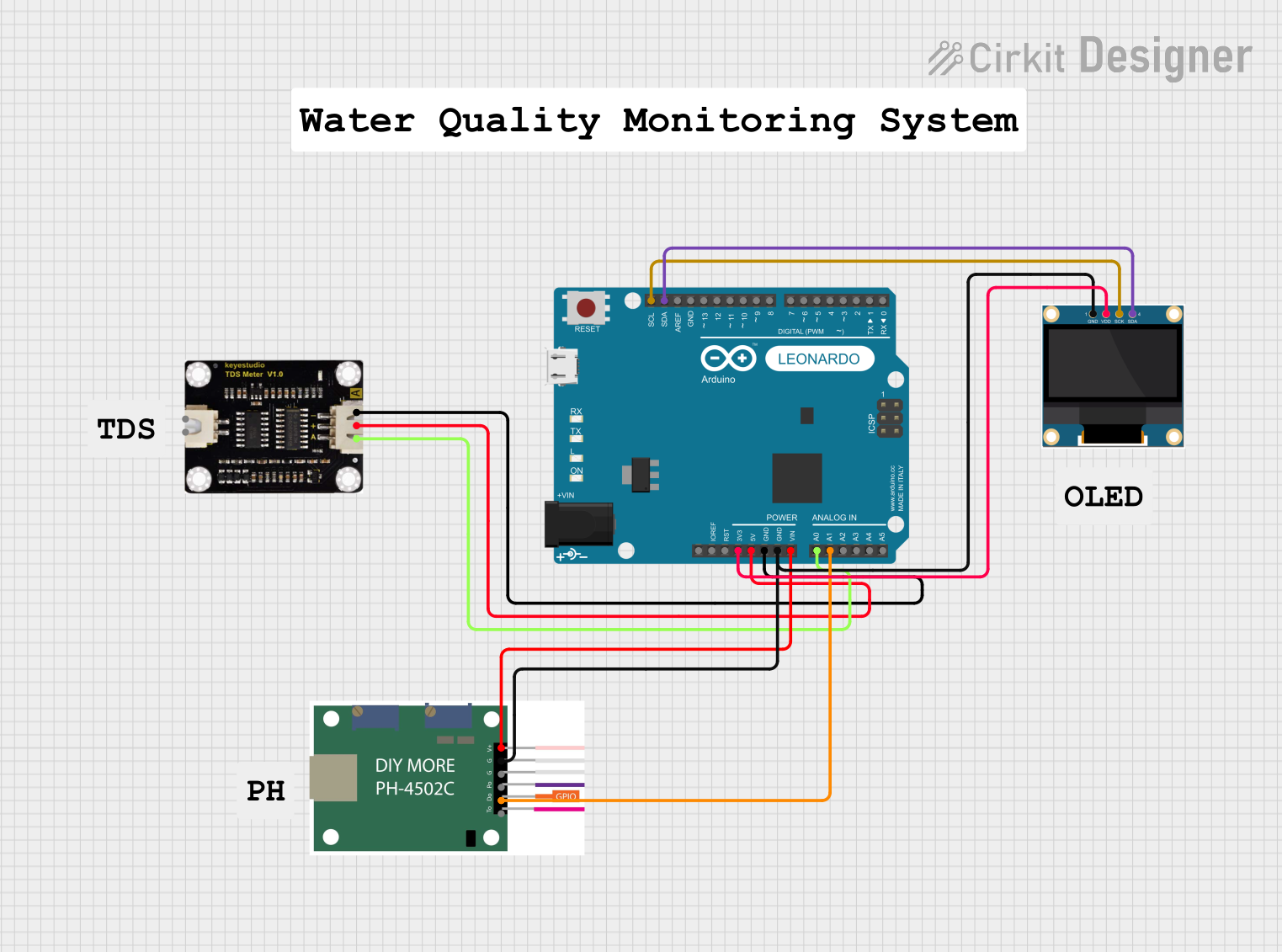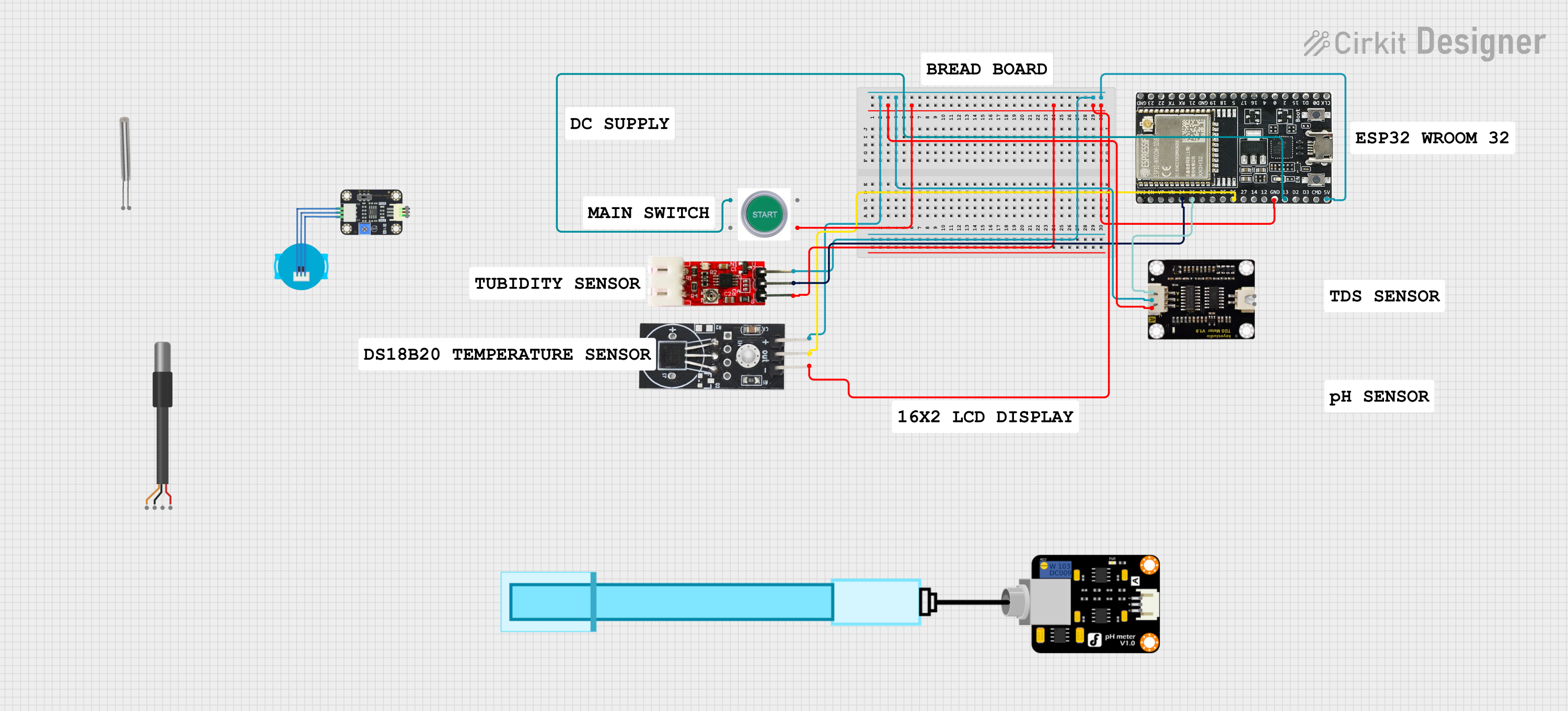
How to Use TDS Sensor: Examples, Pinouts, and Specs
 Design with TDS Sensor in Cirkit Designer
Design with TDS Sensor in Cirkit DesignerIntroduction
The TDS (Total Dissolved Solids) Sensor by Seeed is an electronic device designed to measure the concentration of dissolved solids in water. This sensor operates by measuring the conductivity of the water, which correlates to the TDS level expressed in parts per million (ppm). TDS sensors are commonly used in water quality testing, hydroponics, aquaculture, and environmental monitoring.
Explore Projects Built with TDS Sensor

 Open Project in Cirkit Designer
Open Project in Cirkit Designer
 Open Project in Cirkit Designer
Open Project in Cirkit Designer
 Open Project in Cirkit Designer
Open Project in Cirkit Designer
 Open Project in Cirkit Designer
Open Project in Cirkit DesignerExplore Projects Built with TDS Sensor

 Open Project in Cirkit Designer
Open Project in Cirkit Designer
 Open Project in Cirkit Designer
Open Project in Cirkit Designer
 Open Project in Cirkit Designer
Open Project in Cirkit Designer
 Open Project in Cirkit Designer
Open Project in Cirkit DesignerCommon Applications and Use Cases
- Water quality testing for drinking water
- Monitoring nutrient concentrations in hydroponics
- Aquaculture water condition monitoring
- Environmental water analysis
- Swimming pool and spa maintenance
Technical Specifications
Key Technical Details
- Operating Voltage: 3.3V to 5.5V
- Output Voltage: 0 to 2.3V
- TDS Measurement Range: 0 to 1000 ppm
- Accuracy: ±10% F.S. (Full Scale)
- Operating Temperature: 0°C to 50°C
Pin Configuration and Descriptions
| Pin Number | Name | Description |
|---|---|---|
| 1 | VCC | Power supply (3.3V to 5.5V) |
| 2 | GND | Ground connection |
| 3 | AOUT | Analog output voltage |
| 4 | NC | Not connected |
Usage Instructions
How to Use the TDS Sensor in a Circuit
- Connect the VCC pin to a 3.3V or 5V power supply.
- Connect the GND pin to the ground of the power supply.
- Connect the AOUT pin to an analog input pin on your microcontroller (e.g., Arduino UNO).
Important Considerations and Best Practices
- Ensure that the sensor is properly calibrated before use.
- Avoid touching the sensor electrodes to prevent contamination and inaccurate readings.
- Use a stable power supply to prevent fluctuations in readings.
- Keep the sensor at a consistent temperature to maintain accuracy.
Example Code for Arduino UNO
// TDS Sensor Example Code for Arduino UNO
const int TdsSensorPin = A0; // Analog input pin that the sensor is attached to
const float Vref = 5.0; // Analog reference voltage(Volt) of the ADC
const float TdsFactor = 0.5; // TDS factor
void setup() {
Serial.begin(9600);
}
void loop() {
int analogValue = analogRead(TdsSensorPin);
float voltage = analogValue * Vref / 1024.0; // Convert analog reading to voltage
float tdsValue = (133.42 * voltage * voltage * voltage - 255.86 * voltage * voltage + 857.39 * voltage) * TdsFactor; // Convert voltage to TDS value
Serial.print("TDS Value: ");
Serial.print(tdsValue);
Serial.println(" ppm");
delay(1000);
}
Troubleshooting and FAQs
Common Issues Users Might Face
- Inaccurate Readings: Ensure the sensor is calibrated correctly. Avoid any electrical noise or interference.
- No Readings: Check all connections and ensure the sensor is powered correctly.
- Fluctuating Readings: Stabilize the power supply and avoid touching the electrodes during measurement.
Solutions and Tips for Troubleshooting
- Calibration: Perform a calibration using a standard solution with a known TDS value.
- Connections: Double-check wiring and soldering for any loose connections.
- Interference: Keep the sensor away from high interference devices such as motors or high current wires.
FAQs
Q: Can the TDS sensor be used in saltwater? A: Yes, but the measurement range and accuracy may vary depending on the salt concentration.
Q: How often should the sensor be calibrated? A: Calibration frequency depends on usage, but typically once every month is recommended.
Q: Is the sensor waterproof? A: The sensor probe is waterproof, but the electronic components are not. Keep the board dry.
Q: What is the lifespan of the TDS sensor? A: With proper maintenance and calibration, the TDS sensor can last several years.
Q: Can the sensor measure the TDS of hot water? A: The sensor is rated for use up to 50°C. Measuring hot water may damage the sensor or produce inaccurate readings.